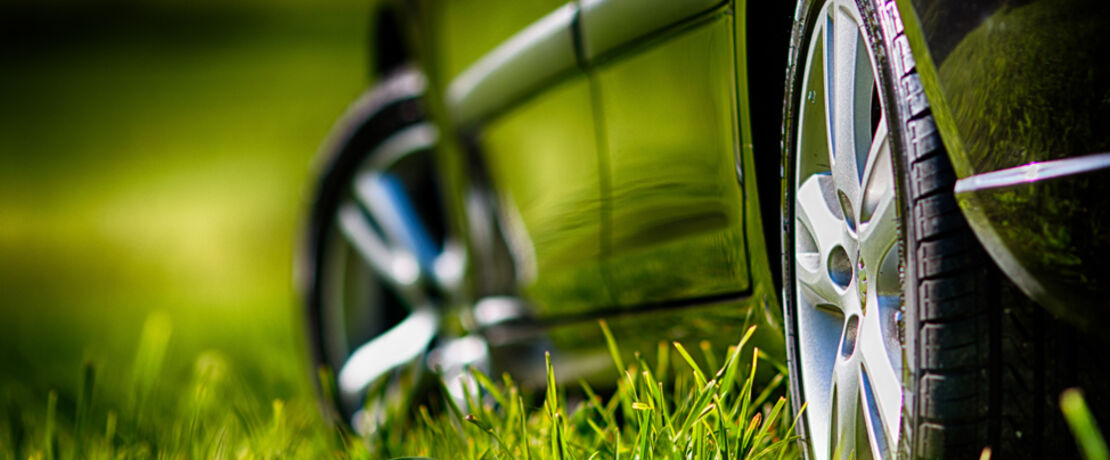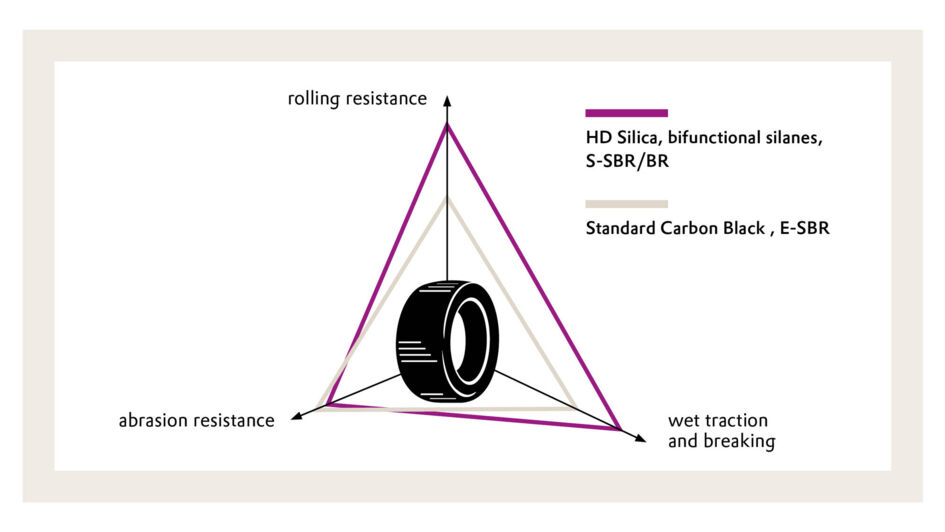
Passenger Car Tires
Less fuel, more grip
Safety and sustainability are outstanding properties of today’s high-performance tires for passenger cars. Thanks to an innovative silica/silane system, cars use less fuel, thereby lessening their impact on the environment.
Tires are designed to keep vehicles safely on the road even through corners or when traveling at high speeds and to ensure that cars come to a standstill quickly when they hit the brakes – even in extreme braking situations. This is particularly important during adverse weather conditions, including rain, snow or ice; the wet grip of the tire’s tread in these conditions is the crucial factor.
At the same time, sustainability demands are increasing: A lower rolling resistance improve fuel efficiency, which in turn contributes to lowering CO2 emissions. A tire’s high abrasion resistance extends its service life, and fewer particles released through abrasion make their way into the environment.
The magic triangle for tire performance
These three criteria – rolling resistance, wet grip performance and abrasion resistance – form the corners of the magic triangle for tire performance. The better tires perform in these categories, the better their overall performance. In other words, the tires enable the car to reach its destination safer and more sustainably. “Green tire” technology using innovative silica/silane systems is constantly unlocking even greater potential for improvement.
The tire’s tread is the decisive factor. It consists of a mixture of rubbers (polymers), which is optimized by a reinforcing filler or filler systems. Conventional tires often use industrial carbon black for this. However, this system does not allow for improvement in any of the three cornerstones of the magic triangle without sacrificing the performance of at least one of the other two – placing limits on the possible advancements in tire technology.

Green tires using the silica/silane system
This is why industrial carbon black has been gradually replaced in today’s tire tread mixtures with the silica/silane system. The combination of precipitated silica and silanes is ideal: Highly dispersible silica is a high-performance filler that provides reliable grip even in wet weather conditions. However, the polar silica is not readily compatible with non-polar polymers. The bifunctional organosilanes create the bridge in the case by coupling the silica to the polymer. Evonik offers them in liquid form (e.g., Si 69®) and solid form (e.g., X 50-S®). In addition, pre-reacted products are available that are especially ideal for the mechanical rubber goods (MRG) market in particular – i.e., silica that has been pre-reacted with silanes to produce the COUPSIL® product line.
Benefits of using silanes: The chemical bond of the silicas to the polymers is the key factor for green tires’ ability to withstand high stresses and heavy loads: The silica/silane system reduces roll resistance and improves wet grip, all while ensuring excellent abrasion properties. Unlike with reference carbon black systems, the magic triangle can be expanded by using suitable silica/silane combinations – tire performance is increased, and tires are safer and more sustainable.
Evonik also offers a new generation of silanes to further improve tire performance. Characteristics of these high-performance silanes include an extremely low roll resistance and even greater fuel savings.
Silica and silanes from a single source
Evonik is the world’s only supplier whose portfolio includes both silanes and precipitated silica, the most important components for green tires. These products are manufactured in the company’s own production sites in America, Asia and Europe. Tire manufacturers can therefore count on supply security plus technical support around the world.
The benefits at a glance:
- Excellent wet grip for improved driving safety
- Outstanding roll resistance for lower fuel consumption
- Good abrasion resistance rivaling the industry standard for carbon black for a long service life
